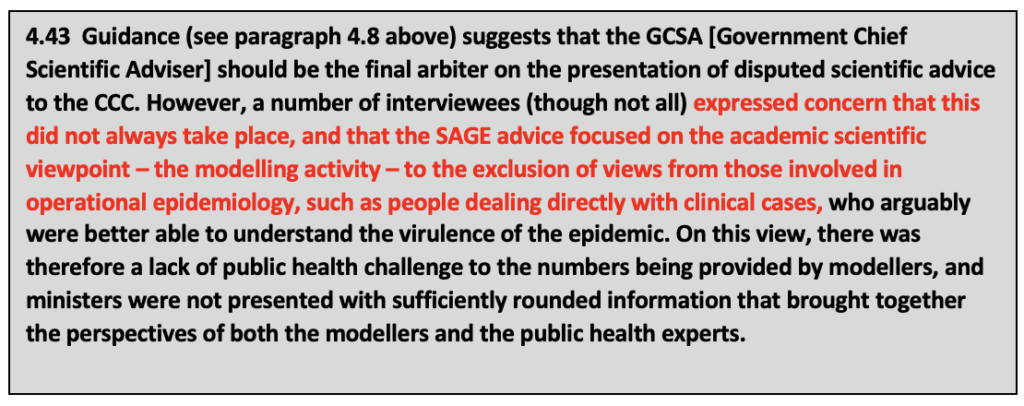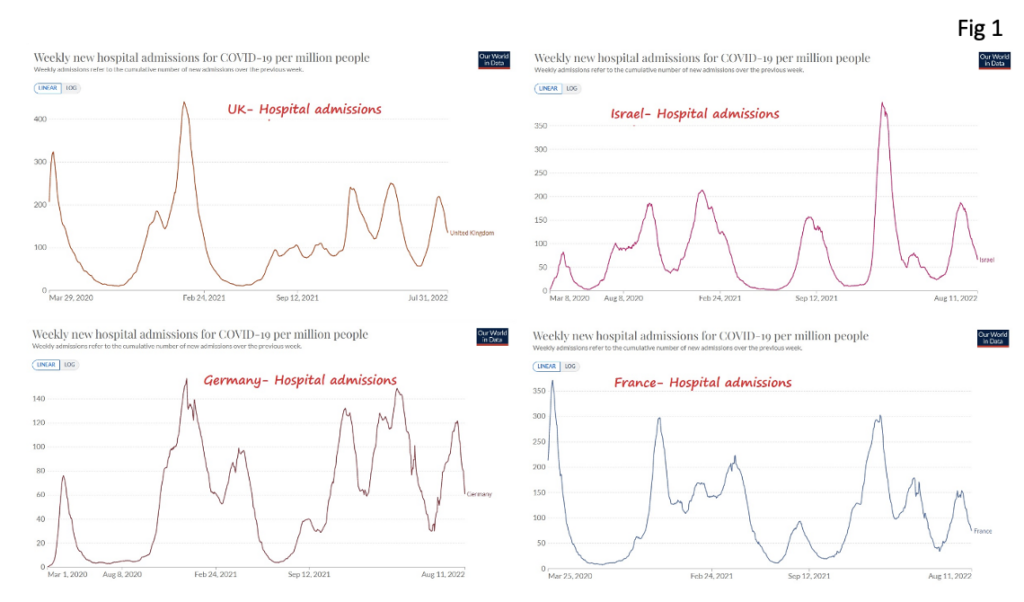The latest ONS figures show the number of deaths in England and Wales for the week ending July 29th to be 18.4% above the five-year average. As a consequence, we’re beginning to see hand-wringing leaders in national newspapers belatedly blaming the lockdowns for the current health disaster. Someone may correct me, but I don’t recall the mainstream media doing much back in spring 2020 to highlight the all-too predictable consequences of lockdown. We are also seeing doctors who spoke out at the time predicting what this calamitous policy would lead to at last getting a hearing. But it’s too little too late.
The defence of supporters of the March, October and December 2020 lockdowns is that criticism now is made with the benefit of hindsight and at the time there was no alternative. I would counter that it isn’t hindsight now but a lack of foresight then that needs examining.
The Independent Inquiry under Baroness Heather Hallett, if it’s to do anything useful at all, must rule out any future imposition of lockdowns, short of a return of bubonic plague! “Ahha!” say the zealots. “But, we didn’t know it wasn’t the equivalent of bubonic plague.”
Actually, despite the official narrative both then and now, we did know quite a bit about Covid’s likely virulence. The Diamond Princess, sailing serenely around the Western Pacific from January 20th to February 20th 2020 until it was struck by an outbreak of coronavirus, was a perfect petri-dish to study the impact on the 3,711 people on board. Of the 1,045 relatively young, relatively fit crew, 145 (14%) were infected and none died – a case fatality rate of 0%. Of the 2,666 relatively old, relatively unfit passengers, 567 (21%) became infected and somewhere between 9 and 14 subsequently died, a case fatality rate of about 2%. Bubonic plague it most certainly wasn’t.
“OK,” the zealots reply, “but, we’ve got 10 million old people in the U.K. If they all caught this thing, hospitalising many and killing 2%, that’s still 200,000 deaths and countless others in hospital.” Then up popped Neil Ferguson with his prediction of 500,000 deaths and the Chicken Lickens went into overdrive. It was at this point that someone in the bowels of the Department of Health might have gone to the shelf in the archive store marked “Inquiries best forgotten” and dragged out the 2010 Hine review of the U.K. Government’s response to the 2009 influenza pandemic. There are a few points to bear in mind about that pandemic:
• It mainly affected young people and children. Globally, 80% of (H1N1) pdm09 virus-related deaths were estimated to have occurred in people younger than 65.
• Neil Ferguson had predicted 65,000 deaths from this pandemic (actual number 457).
• 90 million doses of Pandemrix were ordered from GlaxoSmithKline, though the Department of Health managed to cancel some. However, it was subsequently discovered that Pandemrix caused narcolepsy, particularly in children, and the vaccine was withdrawn and compensation paid out by the U.K. Government.
In perusing the Hine report, if they’d got as far as p.68, they’d have come across this:

That’s interesting. Dame Deidre Hine, unlike those responsible for locking us down in 2020, had the nous to look back through the archives at reports on the Government’s response to previous pandemics and found that as early as 2003 warning flags were being waved about putting too much emphasis on models and recommending a broader approach to decision making.
On the previous page there’s another warning: Modellers are not “court astrologers“ it says:

Finally, just read the following extract from p.69 of the Hine report. Wouldn’t Professors Sikora, Heneghan, Gupta, Bhattacharya, Kulldorff and many, many others, recognise this trait?

Clearly, there was experience in the Health Department that should have come to the fore and recommended a more measured approach.
The lockdowns stand or fall on the credibility of Ferguson’s models and on the belief that, even if they were hopelessly wrong, as they were, the prudent thing was to assume they were right and proceed accordingly. The Hine report warns against this approach and the fact that the pre-existing pandemic response plan, eminent epidemiologists and doctors from around the world also warned against this will surely persuade the Hallett Inquiry to reject the notion that that there was no alternative.
Of course, apart from saving lives the other justification for imposing the lockdowns was to ‘save our NHS’. Well, we built the Nightingale hospitals between lockdowns one and two and never used them, so forgive me if I’m a little sceptical about this justification beyond the first lockdown.
Let’s just look at how effective lockdowns and other NPIs have been in changing the profile of hospital admissions with Covid. Did our enforced actions flatten the sombrero? Figure 1 shows Covid hospital admissions from March 2020 to the present for the U.K., Israel, Germany and France – I could have chosen any countries, they all tell the same tale. Regardless of whatever NPIs have been in place, regardless of any vaccination programme, the shape of each wave looks pretty much the same, no flat sombreros in sight, just KKK hoods!

It wasn’t hindsight that allowed Anders Tegnell in Sweden to avoid lockdowns. Professor Sikora didn’t have the benefit of hindsight when he warned of the all-too-predictable consequences of lockdown in terms of foregone cancer treatments. Neither was it hindsight that Professor Heneghan relied upon when he saw, during his weekend shifts in geriatric wards, that old people weren’t getting the care and advocacy that previously ensured they were kept hydrated. (Can I recommend the episode of the Brendan O’Neill podcast with Carl Heneghan? It’s exceptional.)
The acid test of the Hallett Inquiry will be if she accepts that either Ferguson’s numbers were credible or that it was reasonable to assume that they were. Defending either proposition will mean it’s a whitewash.











To join in with the discussion please make a donation to The Daily Sceptic.
Profanity and abuse will be removed and may lead to a permanent ban.